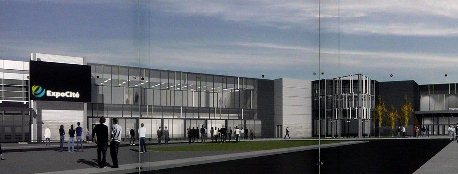
|
November 2012 |
[an error occurred while processing this directive] |
|
Advantages
of DALI DALI fixtures
in your building have a
unique I.P.
address and, can be controlled individually
or in a group, without any limitation. |
Maxime
Lacroix, Administrative Officer Cristal Controls |
| Articles |
| Interviews |
| Releases |
| New Products |
| Reviews |
| [an error occurred while processing this directive] |
| Editorial |
| Events |
| Sponsors |
| Site Search |
| Newsletters |
| [an error occurred while processing this directive] |
| Archives |
| Past Issues |
| Home |
| Editors |
| eDucation |
| [an error occurred while processing this directive] |
| Training |
| Links |
| Software |
| Subscribe |
| [an error occurred while processing this directive] |
DALI technology has
been used for decades in Europe and is considered
as a standard there. Recently, many companies in America started
using it in big projects as it gave them the capacity to use the full
potential of the building. Here’s a short text explaining how DALI can
help your project be more successful.
What is DALI?
DALI means Digital
Addressable Lighting Interface. In other words, it
means that all the DALI fixtures in your building have a unique I.P.
address and, with the use of a computer, can be controlled individually
or in a group, without any limitation.
DALI Limitations
Before going any
further, it is really important to understand what the
limitations behind the DALI systems are. In terms of building size,
there are no limitations. Projects have been done for very small
buildings to huge office buildings. Components such as ballasts,
switches, scene controllers, motion detectors and photocells must be
approved for DALI systems (Advance, Osram, Universal, etc.). The rule
of thumb is that you can have 64 individual addresses per loop, 16
groups and 16 scenes, and you can add as many loops as you want (for
example, a recently completed building had over 1600 DALI ballasts in a
convention center).
Using DALI Features
To benefit from DALI’s full potential, control via a web interface is
the best method. For example, Cristal Controls
(http://www.cristalcontrols.com/)
created a web application (Jasper
MCU) that can be used via normal PC, MAC, iPad, Smartphone, etc. and
can control lights individually, without any restrictions. Jasper not
only allows you to control individually every ballast’s light
intensity, but you can easily schedule holidays, working hours and
such. One of the greatest features we can see in DALI systems is that
it
can spot burned out lamps, but can also warn the building manager when
they will be due for a change so that he can do preventive replacement.
Real Life Application of DALI
As practical is always easier to understand than theory, we’ll analyze
a recent project done by Cristal Controls for Expocité
(http://www.expocite.com/index.php/en/)
in Quebec, CANADA. Expocité is
a 125,000 square feet space convention center where many tradeshows and
exhibition happen during
the whole year. As not every show
require the use of 100% of the available space, a moving wall has been
installed in the building and hides unused space. As the used space is
not predetermined, Jasper MCU can be used to select exactly the used
space and leave the unused one in the dark or dimmed. Another great
example would be an auto show that happened and some carmakers wanted
more or less lighting (depending on the type of paint they had on their
vehicles), so the building manager came next to the vehicles and used
an iPad to dim the lights to the exact lighting level that was needed
for the vehicles (different level for each carmaker). Finally, such a
big building uses more than 1600 ballasts to cover the 125,000
square feet space, so finding a burned out light is very difficult.
Using the dynamic plan on Jasper MCU, the building manager can easily
spot when a light needs to be changed and does not need to walk the
whole place to find it. DALI is a perfect solution to save time on
maintenance and not be limited to existing wiring as it is digitally
possible to change a whole room setup in less than a minute. Here
is a short video showing what a DALI system can do: http://www.youtube.com/embed/60LjthibCc4

Costs Behind DALI Systems
[an error occurred while processing this directive]Unlike
popular belief, DALI components are not more expensive than
regular 0-10V ones. Pricing is very similar to normal dimming ballasts.
Installing DALI fixtures is also much faster, because you use the same
conducts as power lines and you install the components using series
wiring. Pricing usually ends up being very similar to regular 0-10V
systems, but the features are much better and long-term (maintenance)
costs are what make DALI systems worth it.
To sum up, DALI is a great flexible solution that will survive
easily for future use. DALI can be used as a stand-alone system (DALI
only), as
a stand-alone subsystem (answer questions to the building management
system) or as a pure subsystem (to work, for example, with BACnet or
LonWorks).
For more information about DALI : http://www.cristalcontrols.com/lighting-control-systems/dali-systems/
For more information about Jasper MCU : http://www.cristalcontrols.com/jasper-mcu/
[an error occurred while processing this directive]
[Click Banner To Learn More]
[Home Page] [The Automator] [About] [Subscribe ] [Contact Us]